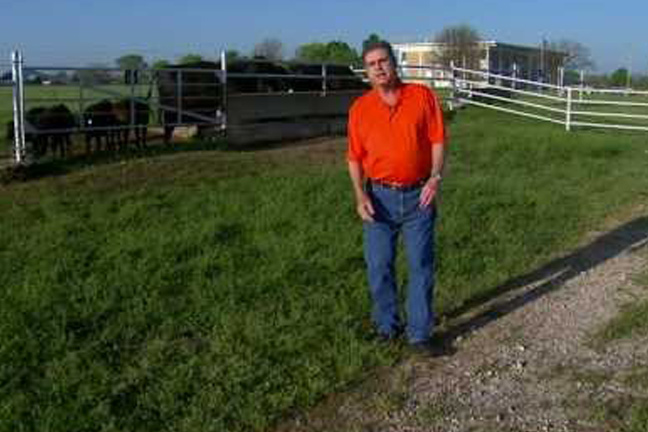
Agricultural News
Glenn Selk Explains What to Expect from 'Normal' Calving
Tue, 28 Jan 2014 09:47:43 CST

Glenn Selk, Oklahoma State University Emeritus Extension Animal Scientist, writes in the latest Cow-Calf Newsletter:
Late January is the time that requires last minute preparations for the upcoming spring calving season. Before the first heifer begins the calving process this spring, it would be wise to review what takes place in a normal delivery. Understanding "normal" will help us better recognize problems when they occur and therefore provide assistance when necessary. The process of "calving" (or formally known as parturition) is generally divided into three stages.
Stage 1
The first stage of parturition is dilation of the cervix. The normal cervix is tightly closed right up until the cervical plug is completely dissolved. In stage 1, cervical dilation begins some 4 to 24 hours before the completion of parturition. During this time the "progesterone block" is no longer present and the uterine muscles are becoming more sensitive to all factors that increase the rate and strength of contractions. At the beginning, the contractile forces primarily influence the relaxation of the cervix but uterine muscular activity is still rather quiet. Stage 1 is likely to go completely unnoticed, but there may be some behavioral differences such as isolation or discomfort. At the end of stage one, there may be come behavioral changes such as elevation of the tail, switching of the tail and increased mucous discharge. Before "pulling" a calf in stage 2, it is imperative that stage 1 (cervical dilation) is complete.
Stage 2
The second stage of parturition is defined as the delivery of the newborn. It begins with the entrance of the membranes and fetus into the pelvic canal and ends with the completed birth of the calf. So the second stage is the one in which we really are interested. This is where all the action is. Clinically, and from a practical aspect we would define it as the appearance of membranes or water bag at the vulva. The traditional texts, fact sheets, magazines, and other publications that we read state that stage 2 in cattle lasts from 2 to 4 hours. Data from Oklahoma State University and the USDA experiment station at Miles City, Montana, would indicate that stage two is much shorter being approximately 60 minutes for heifers and 30 minutes for cows. In these studies, assistance was given if stage two progressed more than two hours after the appearance of water bag at the vulva. Those that took longer needed assistance. These and other data would indicate that normal stage two of parturition would be redefined as approximately 60 minutes for heifers and 30 minutes for adult cows. In heifers, not only is the pelvic opening smaller, but also the soft tissue has never been expanded. Older cows have had deliveries before and birth should go quite rapidly unless there is some abnormality such as a very large calf, backwards calf, leg back or twins. If stage 2 lasts considerably longer than the 1 hour for heifers and 30 minutes for heifers, the health of the baby calf could be compromised by the extended time in the delivery process. In addition, re-breeding performance of the mother can be delayed because of the longer stage 2 of calving.
Stage 3
The third stage of parturition is the shedding of the placenta or fetal membranes. In cattle this normally occurs in less than 8-12 hours. The membranes are considered retained if after 12 hours they have not been shed. Years ago it was considered necessary to remove the membranes by manually "unbuttoning" the attachments. Research has shown that manual removal can be detrimental to uterine health and future conception rates. Administration of antibiotics usually will guard against infection and the placenta will slough out in 4-7 days. Contact your veterinarian for the proper management of retained placenta.
Cow calf producers are encouraged to read Oklahoma State University Extension Circular E-1006: Calving Time Management for Beef Cows and Heifers.
WebReadyTM Powered by WireReady® NSI
Top Agricultural News
More Headlines...




















